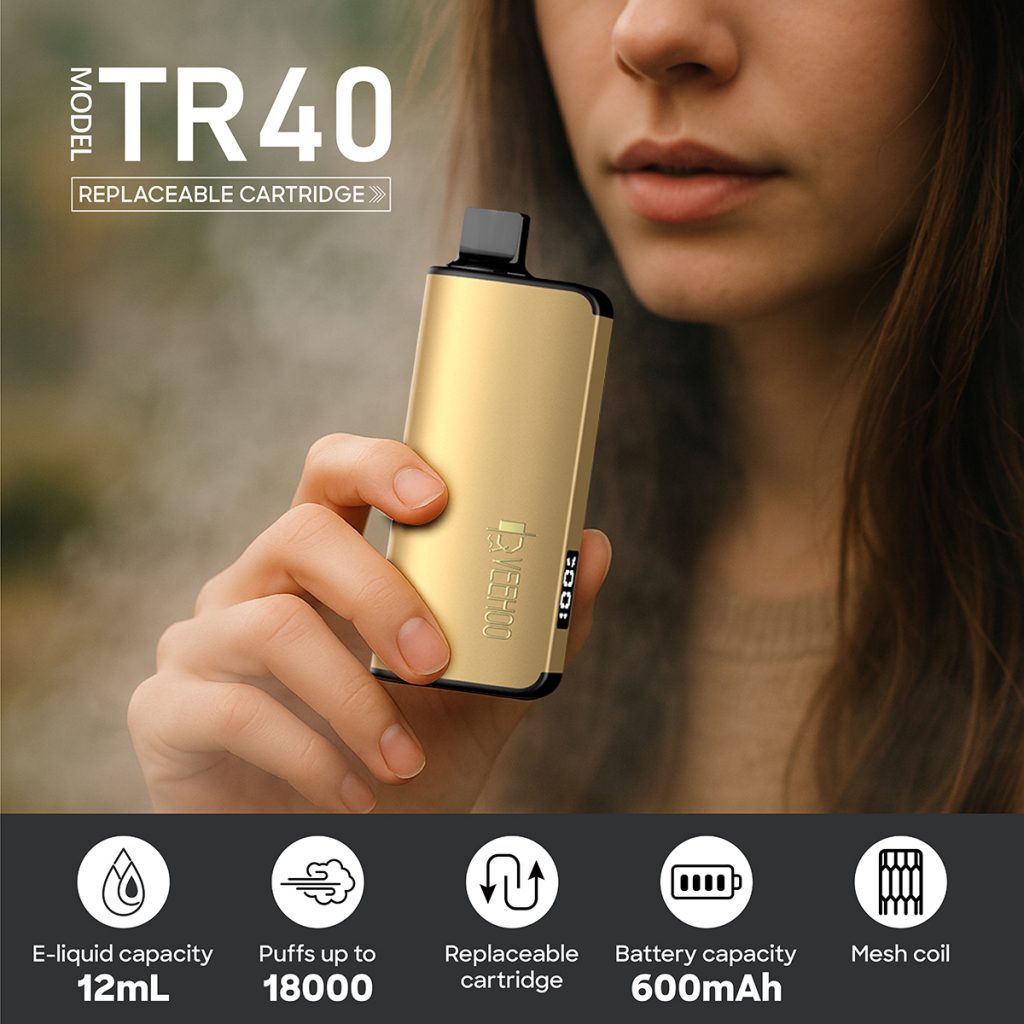In recent years, e-cigarettes have rapidly gained popularity in the UK. Many see them as a less harmful alternative to traditional cigarettes. The government has, to some extent, supported e-cigarettes in its efforts to encourage smokers to switch to e-cigarettes and reduce cigarette consumption. However, with the increasing use of e-cigarettes among young people and the proliferation of nicotine-free, low-priced, or flavored products, regulatory gaps and market chaos have become increasingly prominent.
To address these challenges, the UK government has begun considering taxation and institutional design to regulate the industry, making it more transparent and orderly, and to curb the potential for misuse by minors and non-smokers. Preliminary proposals were included in the 2024 budget report, and the government subsequently launched technical consultations and solicited public feedback on the “Vaping Products Duty” and its accompanying “Vaping Duty Stamp” system.
In 2025, the government officially confirmed that, starting October 1, 2026, e-cigarette products will be required to carry tax labels, and a fixed tax rate will be imposed on e-cigarette liquids (both nicotine and non-nicotine). Furthermore, compliance requirements for manufacturing, importing, storage, and sales will be strengthened.
The government aims to achieve several goals through these measures: raising the “entry cost” of e-cigarettes to curb excessive use by young people and non-smokers; clearly distinguishing between legal and illegal products, providing a handle for market regulation; and maintaining the appeal of e-cigarettes as an alternative, encouraging smokers to switch to less harmful alternatives.
First, regarding the tax rate, the government has determined a flat tax rate of £2.20 per 10ml for e-cigarette liquids. This rate applies regardless of whether the product contains nicotine. Some sources also indicate that after paying the tax, the retail price of 10ml of liquid could increase to approximately £9.20 (including VAT).

Secondly, there’s the tax labeling system. From October 1, 2026, all e-cigarette products manufactured or imported into the UK must bear a tax label approved by HMRC (HM Revenue and Customs) to be legally released onto the market. During the initial transition period, a “transitional stamp” will be used. This stamp has the same physical security features as the official stamp, but it won’t yet be digitally scannable. The stamp is tied to tax registration, and only businesses approved by HMRC can order, apply, and sell the product. Strict penalties will be in place for counterfeiting, tampering, or failing to label products, including product seizure, fines, and even criminal prosecution.
Approval and registration requirements will also be strengthened for manufacturing and storage. From October 2026, manufacturing sites without HMRC approval will be prohibited from engaging in e-cigarette product production activities (including mixing untaxed liquids). Similarly, warehouses storing untaxed products must be authorized. Furthermore, importers importing products manufactured overseas into the UK must ensure that they are duty-labeled before arrival, or that they are stored in a controlled bonded warehouse and labeled by an approved UK representative upon entry.
On the sales side, businesses generally do not need to apply for a license from HMRC to sell labeled products; however, starting in April 2027, selling unlabeled products will become a criminal offense. To ensure the industry has an adjustment period, the government has established a registration period: from April 2026 to October 2026, businesses can apply to join the Vaping Products Duty and Duty Labeling system. In short, this set of laws—the tax and duty labeling system—extends from product “birth” (manufacturing and importation) to product “marketing” (labeling and sales), aiming to establish a closed-loop management system.
Such a major institutional change will inevitably have far-reaching impacts on the industry, consumers, public health, and other aspects. The following analyzes both the positive and negative aspects.
Positive Impacts:
First, it will help clean up the market and combat illegal products. The tax labeling system acts as a form of “identity authentication,” allowing labeled products to be traced, tracked, and regulated. This will make it more difficult for tax-evading, counterfeit, or unidentified products to circulate through legitimate channels. This mechanism will establish clearer barriers for the entire industry, giving law-abiding businesses greater confidence and reducing the potential for black and gray markets.
Second, it will provide a protective barrier for consumers. The labeling system ensures that the products they purchase are, at least legally, legitimate, providing consumers with more information on their origins and compliance. Strengthened regulations will provide greater clarity on product safety, label authenticity, and responsible parties. This will, to a certain extent, mitigate the health risks posed by substandard and counterfeit products.
Third, from a public finance and policy perspective, this tax revenue will generate stable revenue for the government. The government can use this revenue for public health expenditures, smoking prevention and control, and law enforcement and supervision. Taxes on tobacco products will also be raised simultaneously to maintain the price gap between tobacco and e-cigarettes, ensuring that e-cigarettes remain an attractive alternative.
Fourth, from a public health policy perspective, this measure may, to some extent, curb e-cigarette trial rates among young people. By raising the “entry cost” of e-cigarettes and raising the barrier to entry, the availability of easily accessible, low-priced products will decrease, potentially reducing the likelihood that minors and non-smokers will adopt e-cigarettes out of curiosity, social urges, or other factors.
Furthermore, for existing smokers who intend to switch to e-cigarettes as a less harmful alternative, if brands can ensure compliance, quality, and safety, the after-tax price, despite the increase, could still be lower than that of cigarettes. This policy may, to some extent, promote a shift from tobacco to e-cigarettes.

Negative Impacts and Challenges:
However, this policy also presents a number of controversies and potential risks. First, the increased tax burden is likely to be passed on to consumers, significantly increasing the price of e-cigarette products. This could become a burden for some users, especially those with limited financial resources; some may even return to traditional cigarettes, defeating the policy’s original purpose.
Second, it could lead to more gray channels or smuggling in the market. Higher taxes could increase profit margins for illegal products and strengthen the incentive for black market or underground transactions. Regulation itself requires additional resources, and inadequate implementation can weaken the policy’s effectiveness.
Furthermore, small manufacturers and new entrants may be squeezed out of the market due to high compliance costs. Approval, labeling, storage permits, and review procedures can place a heavy burden on small and medium-sized enterprises. This could undermine the industry’s innovative vitality and diversity.
Furthermore, some worry that the policy may hinder those who genuinely rely on e-cigarettes to quit smoking. If e-cigarettes no longer offer a price advantage, their motivation to quit or continue using may weaken, and they may even return to smoking. The government needs to strike a balance between health and tax objectives.
Finally, if the implementation details of this policy are imperfect, it could also lead to administrative friction and disruption. For example, a choppy labeling process, slow system integration, lengthy approval cycles, and insufficient supply of tax labels could all lead to market disruption or supply delays, impacting normal sales.
Possible Opportunities and Challenges: A Case Study of the VEEHOO Brand
How can an e-cigarette brand respond to such policy changes? Let’s analyze the VEEHOO brand as an example.
According to public information, VEEHOO’s e-cigarette business was jointly developed and operated by a group of senior industrial designers and engineers from the UK and China. Its parent company has manufacturing capabilities in Shenzhen, Guangxi, and other locations in China, as well as strong R&D capabilities. VEEHOO possesses considerable scale and capabilities within the industry chain.
First, on the positive side, this policy change may present a reshuffle opportunity for established, regulated, and resourceful brands. Companies with strong compliance capabilities, sufficient capital, effective supply chain control, and reputable brands are more likely to successfully pass approvals, obtain labeling, and legally sell their products. For VEEHOO, thorough preparation in labeling, tax registration, warehousing compliance, and establishing a traceability system will position it for a more advantageous position under the new system.
Second, brand reputation, quality assurance, and after-sales service will become key competitive factors. As the market becomes more discerning about compliant products, consumers may pay more attention to the legality, safety, and brand responsibility behind these products. If VEEHOO can emphasize its legal compliance, quality assurance, rigorous production processes, and responsible traceability in its marketing and practice, it will help enhance brand trust under the new system.
Third, brands can focus on product positioning and innovation. Although the tax rate applies equally to all e-cigarette liquids, brands can still reduce costs, enhance differentiation, and increase added value by focusing on packaging design, flavor adjustments, safety features, and hardware design (such as atomizers and cigarette holders). This way, even if the price increases after the tax, consumers may still accept it if they believe it’s “good value for money.”
Fourth, in terms of market strategy, VEEHOO can actively participate in policy interpretation, industry associations, and compliance alliances, communicating with government and regulatory agencies to secure appropriate transition arrangements, streamline approval processes, and support the supply of tax labels. Preemptively developing compliance, labeling, and warehousing systems is a key means of mitigating risks.
Of course, challenges should not be underestimated. If brands fail to complete compliance preparations such as registration, labeling, and warehousing permits in a timely manner, they may face product seizures, sales disruptions, fines, and damage to their reputation. Especially for brands exporting to or targeting the UK, risks in areas like tax labeling and import/export customs clearance are heightened. For small or startup brands, compliance costs may pose a significant barrier.
From a consumer perspective, if VEEHOO’s existing product prices increase significantly, to minimize the impact, the brand may choose to absorb some of the tax burden itself or mitigate user churn caused by price increases through promotions, bundled products, value-added services, and membership programs.
Overall, under the policy changes, if VEEHOO can seize the institutional dividends, fulfill its compliance obligations, and enhance its brand reputation and product quality, it may secure a more stable market share in the new landscape. If it mishandles the issue, it may be marginalized in the fierce market reshuffle.

Reflecting on the Pros and Cons of the Policy and Key Conflicts
For a policy that combines health, economic, and regulatory objectives, we must consider its complexities and contradictions.
On the one hand, public health objectives require the government to restrict channels that may lead to underage e-cigarette abuse; on the other hand, e-cigarettes, as a potential “smoking alternative,” play a role in tobacco harm control. If taxes are so high that e-cigarettes lose their price competitiveness, they could actually encourage some users to return to cigarettes, undermining long-term health goals.
Furthermore, policy design must be cautious to avoid excessively stifling industry innovation. If small and medium-sized brands struggle to bear the compliance costs, the industry could become monopolized by a few large companies, weakening innovation. This could suppress social demand for market diversification, flavor innovation, and device innovation.
On the other hand, regulatory enforcement is crucial to policy success. Regulations alone, without effective enforcement, could lead to large-scale smuggling, counterfeiting, and the emergence of gray markets, effectively weakening the policy’s effectiveness. The government needs to establish a coordinated mechanism among regulatory agencies, customs, tax authorities, law enforcement, and local agencies.
Furthermore, the fairness of the policy also warrants attention: Even if the government emphasizes transitional arrangements and subsidies, the impact of price increases on users with limited financial resources and access to information could still be significant. Policies should balance “health promotion” with “social justice.”
In fact, the UK government has also addressed some of the objections in public documents. Some retailers and industry insiders are concerned that some businesses will be unable to survive due to the tax burden or compliance costs, or that poor regulation could expand the illegal market. The government responded by stating that it will work with the industry to establish a transition period, approval windows, regulatory mechanisms, and a penalty system.
Therefore, when ultimately evaluating this system, we cannot simply conclude whether the tax is good or bad, but rather examine the rationality of its design, the ability to implement regulation, the industry’s tolerance, and how it strikes a balance between public health goals and market vitality.
Outlook and Conclusion
The UK’s proposed e-cigarette tax and labeling system, scheduled to begin in 2026, is a significant step forward in e-cigarette regulation in the UK and globally. It not only signals a phase of stricter government regulation of the e-cigarette industry, but also heralds the potential for profound structural change in the e-cigarette market.
On the positive side, this system has the potential to clean up the market, combat illegal products, improve consumer protection, generate fiscal revenue, and curb underage abuse. On the other hand, it presents challenges such as price burdens, gray market incentives, affordability for small manufacturers, and difficulty in regulatory enforcement. For brands like VEEHOO, preemptive compliance systems, strengthening quality and reputation, and actively participating in industry dialogue will give them an advantage in the new market landscape. Conversely, insufficient preparation could lead to marginalization in the face of policy changes.
In the coming years, detailed policy implementation, tax label availability, administrative efficiency, regulatory coordination, and industry adaptability will all be key variables. The interaction and negotiation between consumers, industry players, and regulators will also significantly impact the system’s effectiveness.
In short, the implementation of the UK’s e-cigarette tax and labeling system signals that the e-cigarette industry is gradually moving from a marginalized sector to a regulated mainstream one. For brands, this presents both challenges and opportunities. For public health, this presents both risk management and an opportunity to explore more refined regulatory approaches. In the future, whoever can best balance compliance and innovation, health and market, and taxation and fairness on this path of institutional reform will likely be the winner.
Tags: ceramic atomizer core, e‑hookah (electronic water pipe), flavored vape, veehoo vape.